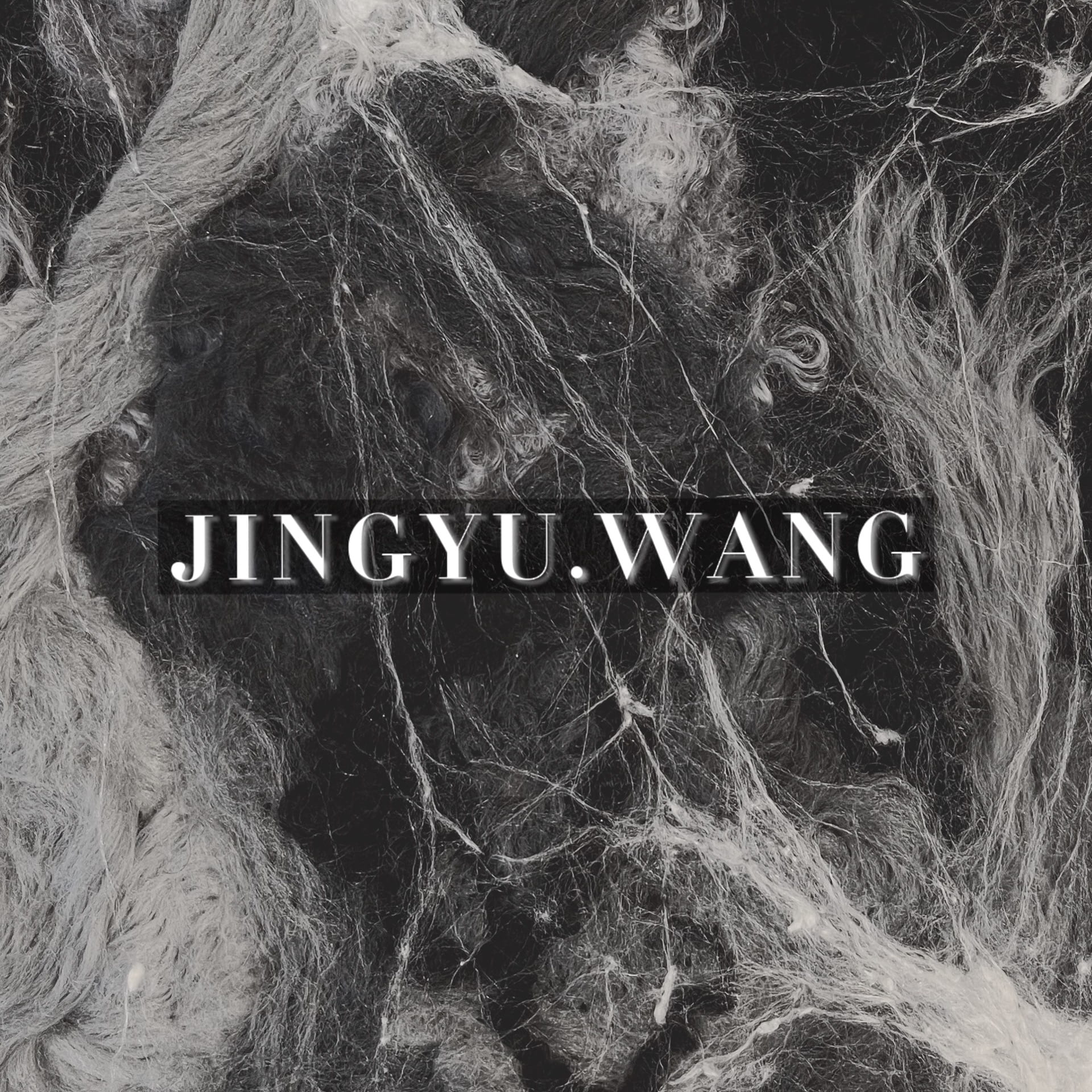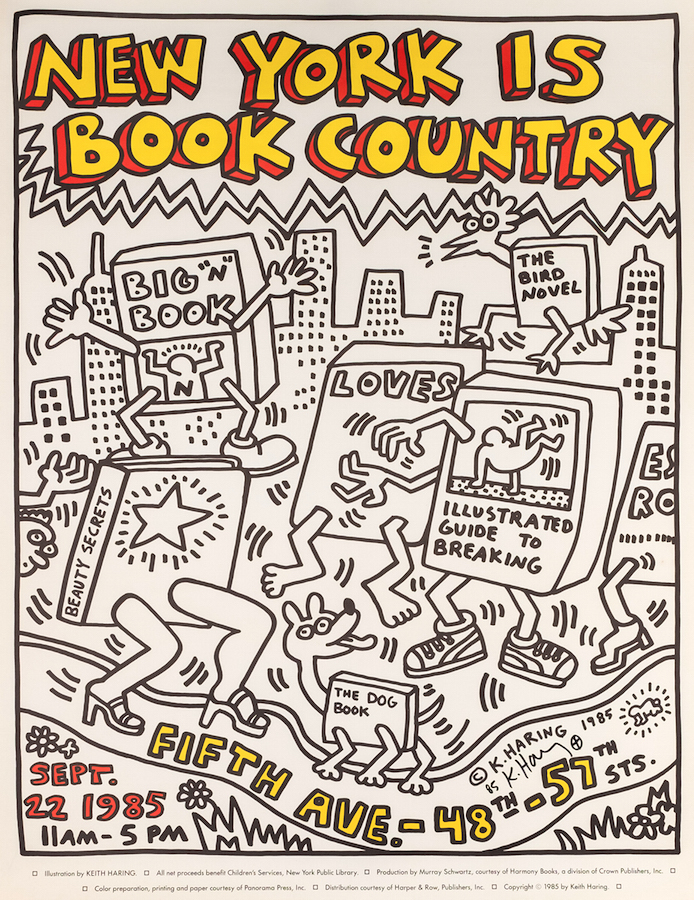The goal of this project was to create a series of journals and artworks based on research of an artist’s real life. The challenge here was to blend fiction and reality together into a plausible invention which the artist could have also created. Foremost, the tone and the artistic style of the invented ‘book’ would certainly have to match up with the artist’s work. After the visit we had at Center for Book Arts, I had a whole new understanding of ‘books’ – it should be a reflection of the artist’s personality and experience. Hence, a book does not necessarily have to be in the conventional form of a book to be considered as a ‘book’ of life. Especially for my chosen artist – Keith Haring – one of his principles for work was that he never preplanned any of his pieces, so there was no way a sketchbook that include images of his artwork could be consider suitable to Haring’s personality. Therefore, I gave up the thought of making the ‘book’ in the form of a book instantly and decided to first finish all my research to narrow down the time period of Keith Haring’s life that I would be writing about. I borrowed several books from the library that described Haring’s life in different perspectives:
Keith Haring. New York: Rizzoli International, 2008.
- A large and comprehensive full color catalog with combinations of Haring’s own explanation or historical facts when there was a key event happened in Haring’s life.
Keith Haring: The Authorized Biography. 1st ed. New York, Prentice Hall Press, 1991.
- A collection of taping sessions recording narrations of life story from the author John Gruen, Keith Haring, and people around Haring.
Keith Haring: 1958-1990: A Life for Art. Köln: Taschen, 2004.
- A professionally written biography of Keith Haring with detailed information on Haring’s artwork, along with illustrations and photographic documentations to help me understand the context of the 1980s America.
Fig.1 – Underlining information and an example of image resource used in my project (subway photo 1983)
I used pencil to underline key information that I might want to use in my journal and scanned all possible images that I wish to include in my project. I tried not to use internet resource to keep my information reliable, the only online source I consulted was the Keith Haring Foundation Website, which is currently running by a non-profit organization founded by Keith Haring himself:
The Keith Haring Foundation. http://www.haring.com/.
- The Keith Haring Foundation Website is an online version of The Keith Haring Foundation Project that serve to “sustain, expand, and protect the legacy of Keith Haring, his art, and his ideals”.
After a thorough research, I decided to narrow the time range for my project to the year from 1977 to 1984 – the time I believed was the life changing period for Haring – and to make the ‘book’ in the form of a box filled with random collections or junks.
 Fig.2 – The Dummy Book made before the actual product
Fig.2 – The Dummy Book made before the actual product
The reason I choose to make a collection box was because I read in my research that Haring had the habit to collect random stuff he saw from magazines that he really liked. Even when he became famous, he would steal posters or vinyls from construction sites to draw on if he felt like he desired it so much. As a result, I came up the idea of creating a treasure box that served as a storage for him to put his collections, of the things he mentioned in the biography that were significant to his career. I chose black as the color of the box to recall Haring’s significant work developed in the 1980s – subway black panel drawings – and also related to most of the black frame outlines used in his ‘cartoonic’ artworks. However, instead of making the box on my own – the original idea I had when I made my dummy book – I decided to use a box I might get from a store for my final piece, because that was something Haring would do – randomly ran into a box on the street, ‘fell in love’ with it and took it home.
 Fig.3 – List of Events I planned to include in the box
Fig.3 – List of Events I planned to include in the box
I also made a note of list of events I planned to include in the box so I had a general idea of what materials I need to get for the project. Considering most of the objects were trash and even paper would be from the 1980s, I would need to make them look worn, so I torn many of the pieces apart. However, for particular objects such as newspaper reports of Pierre Alechinsky, I did feel like Keith Haring would take good care of them as he did admire Alechinsky deeply. Similarly, I made careful work for objects from specific events that were significant enough to Haring.
Fig. 4 – Journals for the Pierre Alechinsky Event in 1977
I paid attention to the voice of Keith Haring. Learnt from Keith Haring: The Authorized Biography, I found Keith Haring a very enthusiastic person when talking about his experience in art and was not afraid of hiding his sexual orientation, emotion and opinions. He was very independent and self-driven, so I tried to imitate his tone in my writing and brought out the informality. I also did many scribbling on ripped pieces of paper, from Metropolitan Museum poster – I assumed he ran away from cops, maybe from that subway station and saw that poster – or on the Coca Cola tin (Keith Haring did a bunch of drawings on Coca Cola commercials in 1984). By creating these series of writings and drawings in the style of Keith Haring, I put myself in the position of him, imagining myself in the 1980s America, holding a white marker in my hand, signing the box with the ‘radiant baby’.
 Fig. 5 – A Look into the Collection Box
Fig. 5 – A Look into the Collection Box
Fig. 6 – The Cover of the box with the Signature ‘Radiant Baby’
I guess what I gained the most from this project was the creativity. After I did the project, somehow, I could not separate which part in this box was real and which part was invented by me. For example, the sticky note incident that Haring mentioned in Keith Haring: The Authorized Biography, which proved to changed his life significantly by alerting him to keep himself updated with the pop culture. After he read the ‘GOD IS A DOG, JESUS IS A MONKEY’ sticky note, he cut his hair short,started listening to funk music, and tried to be ‘cool’. These all happened on his way to a local McDonald’s, so I wrote my first journal on a food bag, and I put a dirty sticky note inside that also has ‘GOD IS A DOG, JESUS IS A MONKEY’ on it. Along with the writing, I got a gum container, colored it all black with a marker, cut a piece of my hair and put it in. The container was then marked ‘My Gone Hair’. There were many moments in this projects I imagined what would I do if I were Keith Haring, if I had ink pen or markers with me and I really wanted to draw something. By doing such practice, I found myself more connected to the artist, and more connected to this project.
 Fig. 7 – Sticky Note Incident with the Hair Box
Fig. 7 – Sticky Note Incident with the Hair Box
 Fig. 8 – Photos from Tseng Kwong Chi (Haring’s Photographer)
Fig. 8 – Photos from Tseng Kwong Chi (Haring’s Photographer)
Fig. 9 & 10 – Overview of all contents in the Collection Box









